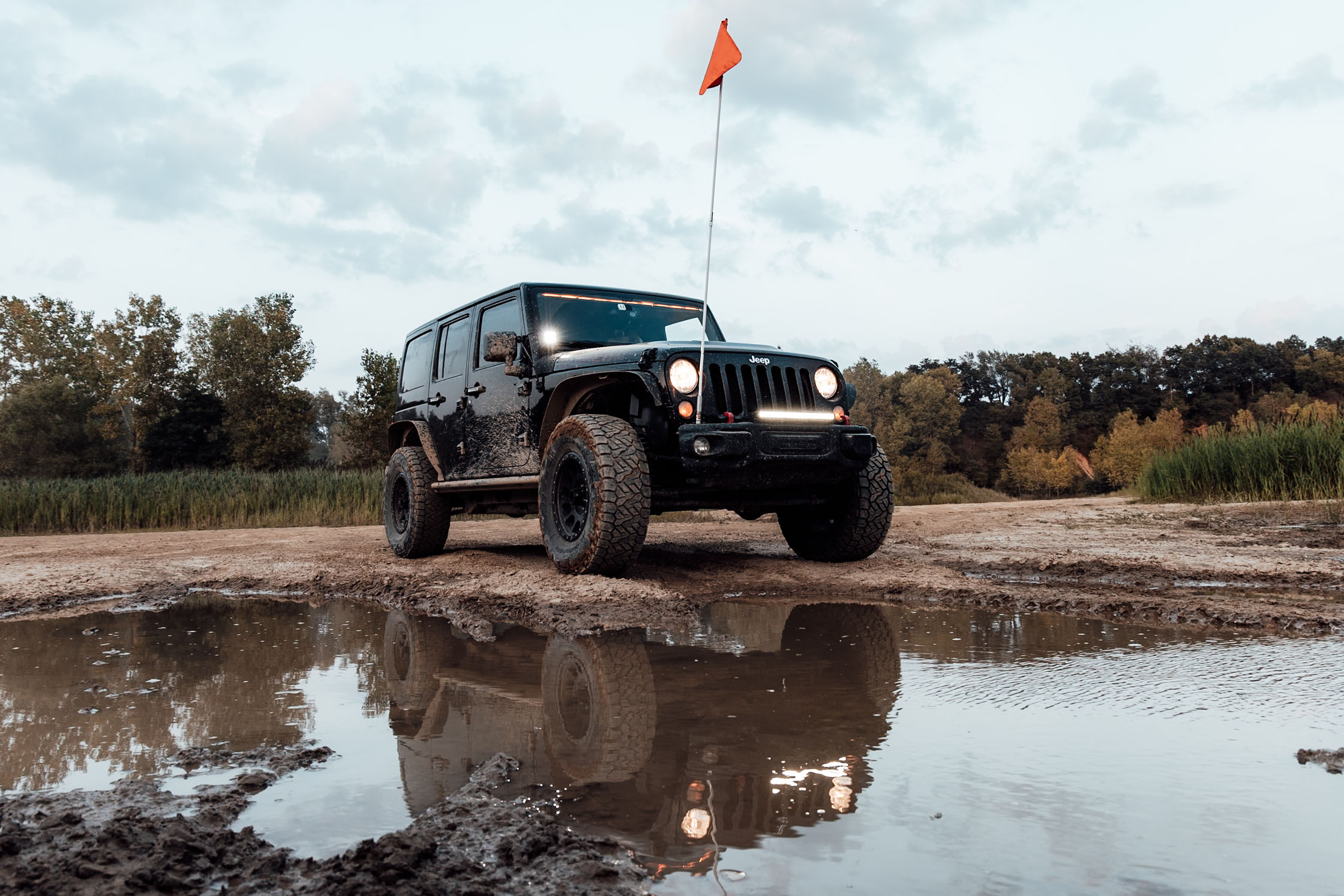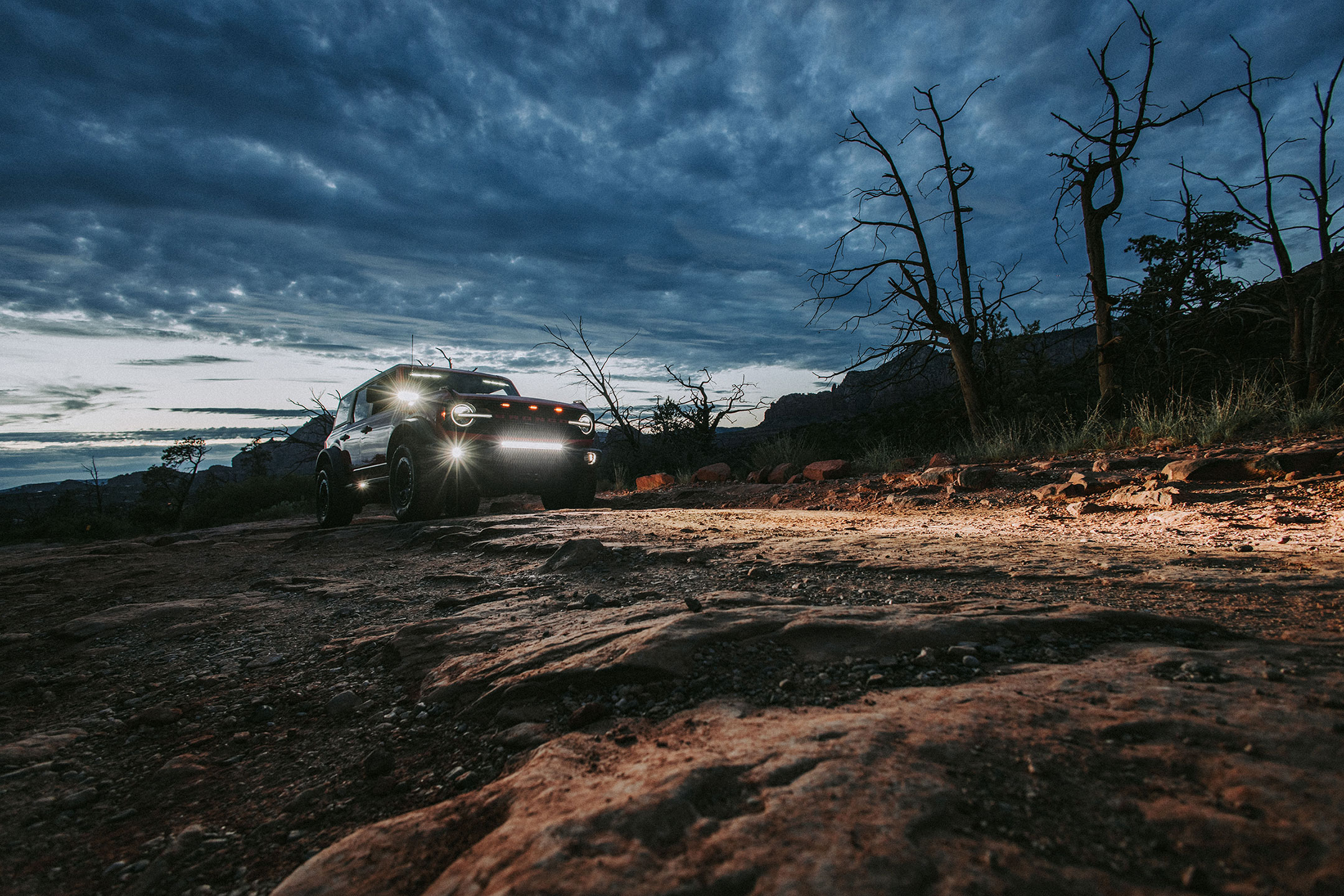In the realm of off-road adventures, where the thrill of exploring uncharted territory meets the challenges posed by darkness, effective lighting becomes an essential companion. As technology progresses and the demand for high-performance lighting solutions rises, understanding the fundamental metrics that define lighting performance—lumens, lux and candela—has become increasingly important. These terms, while rooted in scientific definitions, serve as the guiding principles for enthusiasts seeking to illuminate their path through rocky trails, dense forests and moonlit deserts; and staying informed about their implications can enhance your nighttime excursions.
Lumens: The Brightness Benchmark
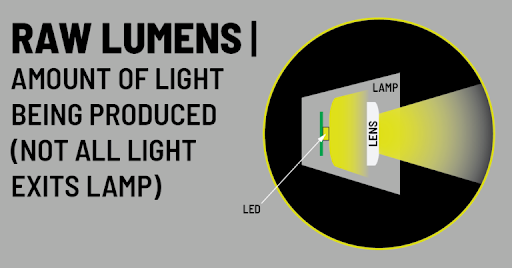
At the heart of off-road lighting lies the concept of lumens, a unit that quantifies the total amount of visible light emitted by a source. Imagine standing in the depths of the wilderness, surrounded by towering trees and uneven ground, when suddenly your off-road lights spring to life, casting a powerful glow. The more lumens a light produces, the brighter it shines, enabling you to see further and navigate with confidence.
In recent years, advancements in LED technology have revolutionized the industry. Manufacturers now offer compact, energy-efficient lights that boast impressive lumen outputs, allowing drivers to light up their surroundings without draining their vehicle’s battery. It’s important to note that while lumens are crucial, they should not be the sole consideration; the effectiveness of the light’s design also plays a critical role in its performance. When shopping for off-road lights, look for a balance between brightness and energy efficiency.
Lux: The Illuminance Factor
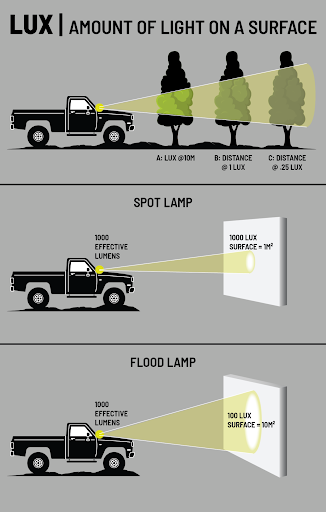
As you venture deeper into the wilderness, the need for precise illumination becomes paramount. This is where lux comes into play. Lux measures the illuminance, or the amount of light that actually reaches a surface area. It’s one thing to have a bright light; it’s another to ensure that light is cast efficiently on the ground, where it matters most.
With the rise of specialized beam patterns and innovative optics, understanding lux allows off-road enthusiasts to select lights that provide optimal coverage for their specific needs. For instance, if you’re navigating narrow trails that twist and turn, a light with a wider beam may be beneficial, while a more focused beam will be advantageous for spotting distant obstacles ahead. The wider beam may produce less lux 100ft away than the narrow beam but its wide spread of light allows you to see farther to each side, even if they have the same lumen. By understanding lux, you can tailor your lighting setup to enhance visibility and safety, ensuring that every corner of your path is well-lit.
How We Measure Lux:
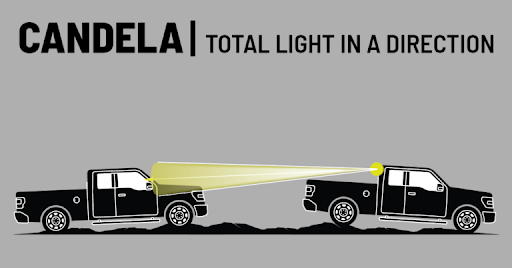
In the lighting industry, ABC measurements are used to describe the performance of a lamp. When raw lumens are used as the scale of how bright a lamp is, it is often a poor indicator to actual performance. In fact, if a lamp has high raw lumens and low ABC numbers, it may indicate an unfocused or poor performing light. The goal of a good spotlight design is to have the lowest raw lumens with the highest ABC numbers.
- A. Lux @ 10 meters is used to tell you how bright objects would look 10 meters away from the front of the lamp. The higher the number, the brighter the object.
- B. Meters @ 1 lux measures the distance from the lamp to an object when you have 1 lux of light bouncing back from the object. So, this tells you how far away a person would be from the lamp when they have 1 lux of light (which is about the minimum amount of light to read a newspaper). To a driver of a vehicle, the person bouncing back 1 lux of light would be highly visible.
- C. Meters @ .25 lux is a standard like B, but now the distance away from the lamp is when the driver is just able to make out the person or object. They begin to appear as the light bouncing back is visible. However, the person at that distance would not have enough light to read a newspaper.
Candela: Directional Intensity
In the pursuit of superior lighting, candela measures the intensity of light emitted in a particular direction. Picture yourself cresting a hill on a moonless night, where the terrain drops steeply below. High-candela lights excel in these scenarios, as they provide concentrated illumination that reaches distant objects, such as rocks or tree stumps, well before you get too close. Another example is the chase light scenario depicted in the image on the left. A higher candela light will help pierce through fog, dust or smoke, allowing the trailing vehicle to more easily track the vehicle in front of them.
As lighting technology progresses, the ability to focus and direct light has improved, enabling users to achieve better long-range visibility and targeted illumination. This means you can expect lights that not only shine brightly but also cast their glow in a way that enhances your ability to navigate challenging environments. Choosing lights with high candela ratings can enhance safety and navigation on challenging trails, as they allow for greater visibility of distant obstacles and terrain features.
Navigating the Modern Off-Road Lighting Landscape
In today’s market, the interplay between lumens, lux and candela is more complex than ever. Gone are the days of simply choosing the brightest light. Now, savvy off-roaders must consider how these metrics work together to deliver the best performance. A high lumen output may be impressive, but without effective optics to guide that light, you may find yourself struggling to see clearly ahead. Conversely, a light with a great beam pattern but low lumen output may not provide sufficient brightness.
When selecting your off-road lighting, reflect on your specific needs and the types of adventures you plan to undertake. Are you tackling rocky, uneven paths or navigating through wide-open spaces? By carefully examining the specifications of various lighting options, you can choose solutions that align with your unique requirements, ensuring that your journeys are illuminated with clarity and confidence.
Conclusion
As you gear up for your next off-road expedition, remember that understanding lumens, lux and candela is integral to selecting the right lighting for your adventures. It’s essential to consider not only the raw lumen output but also the beam pattern, light distribution and directional intensity to ensure you’re getting the best performance for your specific application. By understanding these concepts, off-road enthusiasts can enhance their visibility, safety and enhance the overall experience on the trails.
Let us know your thoughts by sharing your comments and feedback on our Facebook and Instagram.
Articles You Might Like
Illuminate your off-road adventures with mpower
There are no street lights where you’re headed. That’s the way you like it. But whether you’re headed up the side of a mountain, getting down and dirty in a mud bog, or racing across snow-covered fields, you’d better have a clear view of whatever lies ahead.

